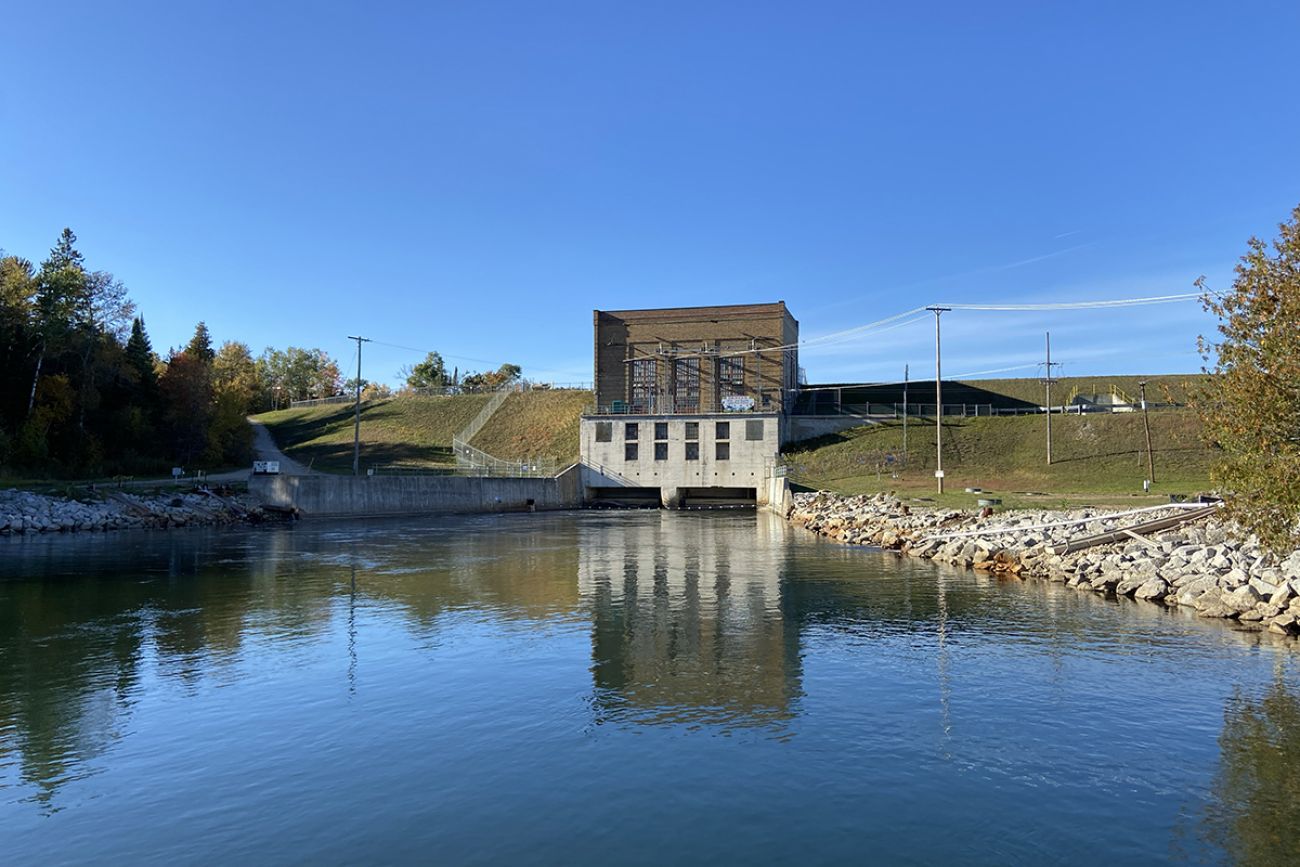Consumers’ decision on 13 dams could alter Michigan rivers, towns

- Consumers Energy said it would consider selling its 13 hydropower dams in Michigan citing high costs and little output
- The dams’ fate could have significant consequences for local economies that have grown up around the dams
- Taken together, the dams generate less than 1 percent of the power used by Consumers’ customers
Consumers Energy will consider selling its 13 hydropower dams in Michigan as it reckons with high costs to maintain structures that provide little electricity.
Consumers said in a press release Wednesday it is “exploring all options” to keep reservoirs intact “while reducing costs for Consumers Energy’s customers.” The process has the potential to reshape Michigan rivers in a way not seen in recent history.
The company last year launched a lengthy process to consider the future of the dams, which plug five Michigan rivers: The Au Sable, Manistee, Muskegon, Grand and Kalamazoo.
Operating licenses for all of the dams, which are more than a century old on average, are set to expire in the coming years. That prompted Consumers to consider the future of aging structures that no longer generate enough electricity to cover the rising cost of operations and maintenance.
Taken together, the 13 dams provide less than 1 percent of the power used by Consumers’ customers. And the power they produce costs several times more per kilowatt-hour than other energy sources.
When Consumers launched its dam review, it put four options on the table for each dam: Relicense and continue generating power; sell to a new owner who would maintain the impoundment; remove the dam and restore a free-flowing river; or build a new barrier that generates no power, but preserves a reservoir.
Consumers’ reconsideration of the dams has drawn keen interest from nearby residents who fear lost property values and dying towns, from electric ratepayer advocates who don’t want Consumers customers to pay to maintain dams that deliver little power, and from environmentalists who see a chance to restore rivers harmed by the impoundments.
Coco Soodek represents the Lake Allegan Association, a group that advocates for landowners on the impoundment created by the Calkins Bridge Dam in the Kalamazoo River. She said she is not optimistic Consumers will find a buyer for the dam.
Any potential sale would be complicated by a number of factors, she said, from PCB-contaminated at the bottom of its reservoir, to a deed restriction that limits who could buy the dam, to the fact that the impoundment functions as a barrier to keep sea lamprey from traveling up the Kalamazoo River.
Soodek said from her perspective, the best option for Calkins Bridge Dam is for Consumers to keep maintaining it. “The second best option,” she said, “is for them to transfer it to a county-level entity, and fund that entity to alleviate (Consumers) of the burden of dealing with and managing the dam and the lake.”
In the century since many of the dams were built, whole economies have cropped up around their reservoirs, which are now valued just as much for boating, swimming and fishing as for the energy they provide.
But the dams also dramatically alter rivers, warming them and slowing their flow in ways that can be devastating for native fish.
“After numerous conversations over the past year, it is clear the reservoirs are important for economic and recreational opportunities in these communities across Michigan,” said Norm Kapala, Consumers Energy’s vice president of generation operations. “But we also know that the current model for financing our hydroelectric power operations requires customers to pay more than nine times for the cost of energy compared to other sources of generation.”
Consumers will issue a request for proposals to explore possible dam sales. During public meetings last year, some communities considered the notion of finding a way to buy their local dam from Consumers rather than seeing it razed.
Michigan’s infamous Midland Dams offer a model. After two of the impoundments failed following years of poor maintenance by former owners, property owners around the dams took control of them, covering maintenance costs with annual taxes imposed on properties near the reservoirs.
But many of the dams owned by Consumers are in rural places with comparatively few nearby residents to split the cost of buying and maintaining a massive dam.
Kapala called Wednesday’s announcement “an initial step we need to take to learn more about what selling the facilities might look like.” He stressed that no final decision has been made.
The company will kick off another wave of public meetings this summer to discuss the dams’ future, beginning in Allegan on Aug. 29. Details are here.
Michigan Environment Watch
Michigan Environment Watch examines how public policy, industry, and other factors interact with the state’s trove of natural resources.
- See full coverage
- Subscribe
- Share tips and questions with Bridge environment reporter Kelly House
Michigan Environment Watch is made possible by generous financial support from:
Our generous Environment Watch underwriters encourage Bridge Michigan readers to also support civic journalism by becoming Bridge members. Please consider joining today.
See what new members are saying about why they donated to Bridge Michigan:
- “In order for this information to be accurate and unbiased it must be underwritten by its readers, not by special interests.” - Larry S.
- “Not many other media sources report on the topics Bridge does.” - Susan B.
- “Your journalism is outstanding and rare these days.” - Mark S.
If you want to ensure the future of nonpartisan, nonprofit Michigan journalism, please become a member today. You, too, will be asked why you donated and maybe we'll feature your quote next time!






